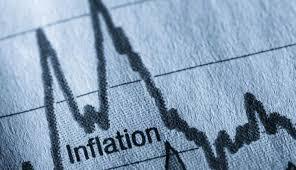News / National
Zimbabwe inflation surges to 95.8%
22 hrs ago | Views

Zimbabwe's inflationary strain deepened in July, with annual inflation accelerating to 95.8%, up from 92.5% in June, underlining the fragility of the country's monetary framework despite tighter policies and a broadly stable exchange rate.
Data released by the Zimbabwe National Statistics Agency (ZimStat) shows that consumer prices continue to climb, driven by surging costs of food, fuel, electricity and other essentials.
The figures suggest inflationary expectations remain deeply entrenched in the economy, even as the Reserve Bank of Zimbabwe (RBZ) maintains a restrictive monetary stance to contain price growth.
The Zimbabwe Gold (ZiG) currency, introduced after sweeping reforms in 2024, is still grappling with the aftershocks of its September 2024 devaluation. Even in United States dollar terms—traditionally more stable—prices rose, with month-on-month USD inflation moving into positive territory at 0.3% in July, reversing June's -0.2% deflation.
While the RBZ attributes the latest spike to "base effects" from last year's policy shift, analysts warn that structural weaknesses are the real drivers.
"Inflationary pressures are always a function of the cost structure and future expectations," economist Vince Musewe said. "This trend will persist until business confidence improves and there is greater clarity around both economic and political stability."
Economist Dr Prosper Chitambara projected that headline inflation will keep climbing into September.
"The annual inflation figure is a barometer of macroeconomic credibility," Chitambara said. "What we're seeing is a delayed correction that reflects underlying fragilities in the economy."
The RBZ has capped money supply growth, increased the bank policy rate to 35%, and tightened controls on quasi-fiscal spending. Yet structural cost pressures—including rising energy costs, import dependency and regulatory burdens—are filtering into consumer prices.
Former monetary policy advisor Eddie Cross maintained that the ZiG remains fundamentally stable.
"This is the most stable period for a local currency since Zimbabwe reintroduced its own unit," Cross said. "What's puzzling is that inflation continues to rise at a time when the ZiG is performing well. In real terms, the currency has appreciated, and we are not seeing exchange rate volatility."
Cross expects inflation to peak in the third quarter before easing towards year-end, in line with RBZ projections.
Central bank officials insist the uptick is temporary and not evidence of a loss of control. They say the current trajectory reflects transitional statistical distortions, and that recent policy measures will anchor prices in the months ahead.
Still, the impact on households and businesses is already biting. Companies are revising prices almost weekly, while households face renewed erosion of purchasing power—particularly from sharp food price increases.
Economists agree that restoring confidence—both in the currency and in government policy—is critical to breaking the cycle of elevated inflation expectations.
"Until there is confidence in the durability of the ZiG and the predictability of the policy environment," Musewe said, "price stability will remain elusive."
As Zimbabwe heads into the fourth quarter, policymakers face the challenge of sustaining monetary discipline while tackling deep-seated structural drivers of inflation. Without a credible fiscal and policy anchor, the ZiG's stability—and the wider economic recovery—remains on uncertain ground.
Data released by the Zimbabwe National Statistics Agency (ZimStat) shows that consumer prices continue to climb, driven by surging costs of food, fuel, electricity and other essentials.
The figures suggest inflationary expectations remain deeply entrenched in the economy, even as the Reserve Bank of Zimbabwe (RBZ) maintains a restrictive monetary stance to contain price growth.
The Zimbabwe Gold (ZiG) currency, introduced after sweeping reforms in 2024, is still grappling with the aftershocks of its September 2024 devaluation. Even in United States dollar terms—traditionally more stable—prices rose, with month-on-month USD inflation moving into positive territory at 0.3% in July, reversing June's -0.2% deflation.
While the RBZ attributes the latest spike to "base effects" from last year's policy shift, analysts warn that structural weaknesses are the real drivers.
"Inflationary pressures are always a function of the cost structure and future expectations," economist Vince Musewe said. "This trend will persist until business confidence improves and there is greater clarity around both economic and political stability."
Economist Dr Prosper Chitambara projected that headline inflation will keep climbing into September.
"The annual inflation figure is a barometer of macroeconomic credibility," Chitambara said. "What we're seeing is a delayed correction that reflects underlying fragilities in the economy."
Former monetary policy advisor Eddie Cross maintained that the ZiG remains fundamentally stable.
"This is the most stable period for a local currency since Zimbabwe reintroduced its own unit," Cross said. "What's puzzling is that inflation continues to rise at a time when the ZiG is performing well. In real terms, the currency has appreciated, and we are not seeing exchange rate volatility."
Cross expects inflation to peak in the third quarter before easing towards year-end, in line with RBZ projections.
Central bank officials insist the uptick is temporary and not evidence of a loss of control. They say the current trajectory reflects transitional statistical distortions, and that recent policy measures will anchor prices in the months ahead.
Still, the impact on households and businesses is already biting. Companies are revising prices almost weekly, while households face renewed erosion of purchasing power—particularly from sharp food price increases.
Economists agree that restoring confidence—both in the currency and in government policy—is critical to breaking the cycle of elevated inflation expectations.
"Until there is confidence in the durability of the ZiG and the predictability of the policy environment," Musewe said, "price stability will remain elusive."
As Zimbabwe heads into the fourth quarter, policymakers face the challenge of sustaining monetary discipline while tackling deep-seated structural drivers of inflation. Without a credible fiscal and policy anchor, the ZiG's stability—and the wider economic recovery—remains on uncertain ground.
Source - Business Times





























